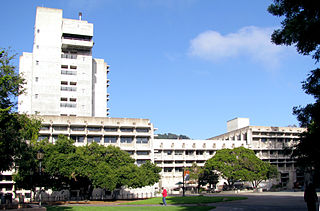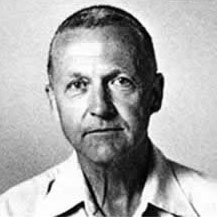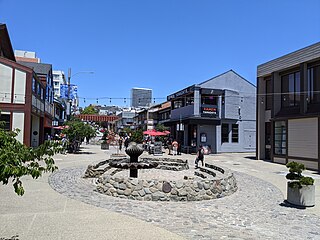Related Research Articles

Myra Melford is an American avant-garde jazz pianist and composer. A 2013 Guggenheim Fellow, Melford was described by the San Francisco Chronicle as an "explosive player, a virtuoso who shocks and soothes, and who can make the piano stand up and do things it doesn't seem to have been designed for."
Simon Herman Van der Ryn was a Dutch-born American architect, researcher and educator. Van der Ryn's professional interest was applying principles of physical and social ecology to architecture and environmental design. He promoted sustainable design at the community scale and the building-specific scale. He designed single-family and multi-family housing, community facilities, retreat centers and resorts, learning facilities, as well as office and commercial buildings.
Lee Friedlander is an American photographer and artist. In the 1960s and 1970s, Friedlander evolved an influential and often imitated visual language of urban "social landscape," with many of his photographs including fragments of store-front reflections, structures framed by fences, posters and street signs. His work is characterized by its innovative use of framing and reflection, often using the natural environment or architectural elements to frame his subjects. Over the course of his career, Friedlander has been the recipient of numerous awards and his work has been exhibited in major museums and galleries worldwide.
Roger Montgomery (1925–2003) was an American architect, and Professor at Washington University in St. Louis and University of California, Berkeley.

The College of Environmental Design, also known as the Berkeley CED, or simply CED, is one of fifteen schools and colleges at the University of California, Berkeley. The school is located in Bauer Wurster Hall on the southeast corner of the main UC Berkeley campus. It is composed of five departments: the Department of Architecture, the Department of City and Regional Planning, the Department of Landscape Architecture and Environmental Planning, and the Institute of Urban & Regional Development.

Kevin Andrew Lynch was an American urban planner and author. He is known for his work on the perceptual form of urban environments and was an early proponent of mental mapping. His most influential books include The Image of the City (1960), a seminal work on the perceptual form of urban environments, and What Time is This Place? (1972), which theorizes how the physical environment captures and refigures temporal processes.

Catherine Krouse Bauer Wurster was an American public housing advocate and educator of city planners and urban planners. A leading member of the "housers," a group of planners who advocated affordable housing for low-income families, she dramatically changed social housing practice and law in the United States. Wurster's influential book Modern Housing was published by Houghton Mifflin Company in 1934 and is regarded as a classic in the field.
Allan Bernard Temko was an American architectural critic and writer based in San Francisco. He won the Pulitzer Prize for Criticism in 1990.

William Wilson Wurster was an American architect and architectural teacher at the University of California, Berkeley, and at the Massachusetts Institute of Technology, best known for his residential designs in California.
Mario Joseph Ciampi was an American architect and urban planner best known for his modern design influence on public spaces and buildings in the San Francisco Bay Area.

Beverly Willis was an American architect who played a major role in the development of many architectural concepts and practices that influenced the design of American cities and architecture. Willis' achievements in the development of new technologies in architecture, urban planning, public policy and her leadership activities on behalf of architects are well known. Her best-known built-work is the San Francisco Ballet Building in San Francisco, California. She was a co-founder of the National Building Museum, in Washington, D.C., and founder of the Beverly Willis Architecture Foundation, a non-profit organization working to change the culture for women in the building industry through research and education.
Christopher J. Chang is an American chemist and the Edward and Virginia Taylor Professor of Bioorganic Chemistry at Princeton University. Previously, he was a professor of chemistry and of molecular and cell biology at the University of California, Berkeley, where he holds the Class of 1942 Chair. Chang is also a member of the Helen Wills Neuroscience Institute, a Howard Hughes Medical Institute investigator, adjunct professor of pharmaceutical chemistry at the University of California, San Francisco, and faculty scientist at the chemical sciences division of Lawrence Berkeley Lab. He is the recipient of several awards for his research in bioinorganic chemistry, molecular and chemical biology.
Jennifer R. Wolch is a professor of Urban Planning, Geography and former dean of the UC Berkeley College of Environmental Design.

Walter J. Hood, is an American designer, artist, academic administrator, and educator. He is the former chair of landscape architecture at the University of California, Berkeley, and principal of Hood Design Studio in Oakland, California. Hood has worked in a variety of settings including architecture, landscape architecture, visual art, community leadership, urban design, and planning and research. He has spent more than 20 years living in Oakland, California. He draws on his strong connection to the Black community in his work. He has chosen to work almost exclusively in the public realm and urban environments.

Rai Yukio Okamoto was an American architect and planner. He served as San Francisco's Director of Planning from 1975 to 1980.

Donald Sidney Appleyard was an English-American urban designer and theorist, teaching at the University of California, Berkeley.

Kathy Goodell, is an American contemporary artist and educator, who works in sculptural objects, installation, drawing, and photography. She is a professor of painting and drawing at the State University of New York at New Paltz.

Bruce Appleyard is an American city planner and urban designer, theorist, consultant, academic, and author. He works as a Professor of City Planning for San Diego State University in the School of Public Affairs. He has authored articles in the emerging field of Livability Ethics. He is the son of Donald Appleyard, a British-born American urban and city planner.
Michael James Dear is an urban geographer and educator. He has written several books, including Why Walls Won't Work: Repairing the US-Mexico Divide, which was published by Oxford University Press in 2013. He teaches City and Regional Planning at the College of Environmental Design of the University of California, Berkeley.

George Thomas Rockrise, FAIA, ASLA, AICP was an American architect, landscape architect, and urban planner of Japanese and English descent based in San Francisco, California. During his career he practiced both nationally and internationally, had a distinguished career in public service, and received numerous honors and awards.
References
- ↑ Caves, R. W. (2004). Encyclopedia of the City . Routledge. pp. 403. ISBN 9780415252256.
- ↑ "Allan Jacobs and Donald Appleyard, Toward an Urban Design Manifesto, APA Journal, Winter 1987" (PDF). Archived from the original (PDF) on 2016-03-04. Retrieved 2016-02-28.
- ↑ amckeag (2015-06-11). "Athena Medals". CNU. Retrieved 2022-06-25.
- ↑ "American Academy in Rome, Fellows - Affiliated Fellows - Residents 1990-2010". Archived from the original on 2017-12-27. Retrieved 2016-02-28.
- ↑ John Simon Guggenheim Memorial Foundation Fellows, Category: Humanities, Field of Study: Architecture, Planning and Design, Competition: US & Canada
- Allan B. Jacobs, Project for Public Spaces.
- Allan B. Jacobs bio, Bruner Foundation.
- Allan Jacobs bio [ permanent dead link ], City of Calgary (Alberta, Canada).
- Allan Jacobs, University of California, Berkeley.